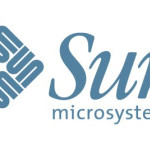- Industry: Computer
- Number of terms: 4807
- Number of blossaries: 1
- Company Profile:
Sun Microsystems is a multinational vendor of computers, computer software and hardware, and information technology services.
An authentication mechanism in which a Web server authenticates an entity via a user name and password obtained using the Web application's built-in authentication mechanism.
Industry:Computer
An authentication mechanism in which a Web container provides an application-specific form for logging in. This form of authentication uses Base64 encoding and can expose user names and passwords unless all connections are over SSL.
Industry:Computer
An authentication mechanism in which a Web application authenticates itself to a Web server by sending the server a message digest along with its HTTP request message. The digest is computed by employing a one-way hash algorithm to a concatenation of the HTTP request message and the client's password. The digest is typically much smaller than the HTTP request and doesn't contain the password.
Industry:Computer
An authentication mechanism employed by two parties for the purpose of proving each other's identity to one another.
Industry:Computer
An authenticated set of users classified by common traits such as job title or customer profile. Groups are also associated with a set of roles, and every user that is a member of a group inherits all the roles assigned to that group.
Industry:Computer
An audit trail contains one record for each logged activity/event. It is a chronological record that enables the reconstruction, review, and examination of a sequence of activities.
Industry:Computer
An audit log where audit records are stored. This term is used in XSCF firmware.
Industry:Computer
An atomic unit of work that modifies data. A transaction encloses one or more program statements, all of which either complete or roll back. Transactions enable multiple users to access the same data concurrently.
Industry:Computer
An architecture for integration of J2EE products with enterprise information systems. There are two parts to this architecture: a resource adapter provided by an enterprise information system vendor and the J2EE product that allows this resource adapter to plug in. This architecture defines a set of contracts that a resource adapter must support to plug in to a J2EE product-for example, transactions, security, and resource management.
Industry:Computer
An application written for the Internet, including those built with Java technologies such as JavaServer Pages and servlets, as well as those built with non-Java technologies such as CGI and Perl.
Industry:Computer
